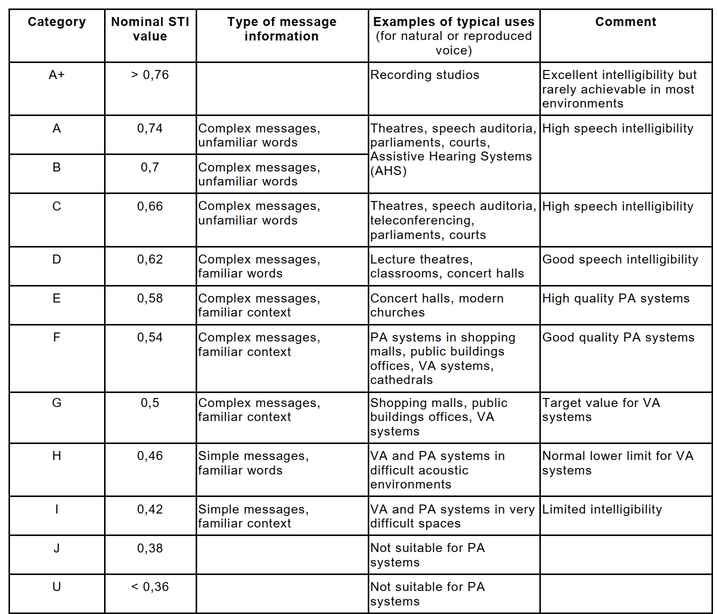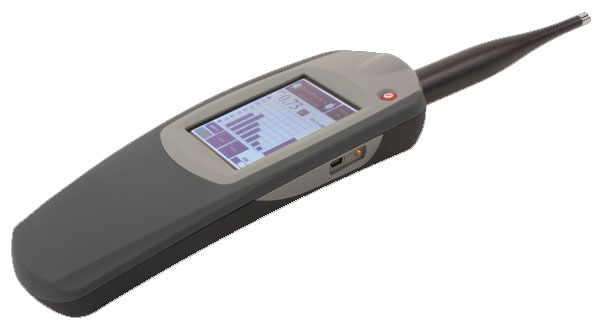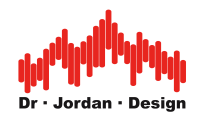The measurement of speech intelligibility according to IEC60268-16
Speech intelligibility is the key to human communication. For emergency warning systems, telecommunications systems, announcement systems (e.g. in train stations) or rooms for speech presentation (training rooms) in general, poor speech intelligibility not only reduces their function, but is also critical to safety.
In many countries there are therefore legal minimum requirements for speech intelligibility. For new public buildings, speech intelligibility must be documented by measurements. In most cases, the IEC 60849 or ISO 7240-16 standard must be taken into account.
The assessment of the quality of loudspeaker systems is often based on the classic parameters such as frequency response, distortion factor, volume, etc. Although these variables have an influence on speech intelligibility, this cannot be derived from them. Speech intelligibility of the overall structure is of elementary importance, particularly for emergency systems where, in an emergency, an announcement must be understood by everyone in the danger area.
How can speech intelligibility be measured?
A distinction is made here between two basic classes of methods for measuring speech intelligibility:
Subjective methods: An announcement or special word sequences are heard and evaluated by several subjects. Parameters for speech intelligibility are derived from statistical evaluations. Ultimately, the speech intelligibility for human listeners is the reference, but these methods are very complex and hardly reproducible. Such tests are standardized in the ISO4870 standard.
Objective procedures: With the help of special measurement signals, parameters are derived which correlate as well as possible with subjective speech tests on the basis of complex investigations. Methods based on DIN/IEC 60268-16, which also form the basis of AkuLap, are very widespread. The standardization ensures a high level of reproducibility and eliminates many sources of error in subjective tests. The class of methods is referred to as STI (Speech Transmission Index).
In the following we only deal with the objective methods according to DIN60268-16.
IEC60268-16
The parameters STI (Speech Transmission Index), RASTI (Room Analysis Speech Transmission Index) and STI-PA are calculated in accordance with the DIN/IEC 60268-16 standard. RASTI is no longer included in the current version of the standard Edition 4 and 5). This standard is very technical and requires a high level of background knowledge.
STI Speech Transmission Index
In this test, human speech is modulated by modulated band-limited noise. Various influences of the transmission system such as reverberation, distortion and background noise reduce the modulation of the test signals. This reduction in modulation is summarized across all frequency bands and modulation frequencies in one parameter, the speech intelligibility index, which can range from 0.0 (unintelligible) to 1.0 (excellently intelligible). This means that one value can be used to describe and compare the speech intelligibility with a single value.
Index comment
0.0-0.3 incomprehensible/bad
0.3-0.43 weak/poor
0.43-0.6 reasonable/fair
0.6-0.75 good/good
0.75-1.00 excellent/excellent
From Edition 4.0 of the 60268-16 standard, the areas have been refined. For a better overview we have included the older version here
Method of measuring speech intelligibility
Two measurement methods are possible for STI.
Direct method with modulated noise
The classic, direct method uses modulated noise and directly measures the modulation loss. However, this method is very time-consuming for all octave bands and all modulation frequencies. In recent years, however, the STI-PA method, which only uses a fraction of the possible combinations, has proven its worth. With this method, the measuring time can be limited to approx. 20s. The measuring setup is very simple, so that no great training effort is necessary.
Indirect method via room impulse response
The second method is based on the room impulse response. Speech intelligibility can be calculated from the impulse response using mathematical methods. In any case, the room impulse response is often measured as part of room acoustic investigations. Then the determination of the speech intelligibility does not represent any additional effort, but is included in the normal evaluation. In particular, the full STI value with all bands and modulation frequencies can be determined directly here. However, the measuring method is more complex and not possible for all PA systems to be measured, but at the same time the entire room acoustics are measured, so that the results are much more meaningful.
Which frequency range is important for speech intelligibility?
The STI method uses 7 octave bands ranging from 125Hz to 8kHz. A single value, the speech intelligibility ST,I, is calculated from all bands.
What are the recommendations for speech intelligibility?
This value (STI) can be between 0 and 1.0. A value of 0 means that voice communication is not possible. 1.0 means ideal speech intelligibility.
Depending on the type of room with different uses, there are recommendations for orientation. In general, the aim is to achieve the highest possible level of speech intelligibility.

When should speech intelligibility be as low as possible?
In some applications, low speech intelligibility is desired. This is evident with areas where confidentiality is desired. But you don't just have to think about security against eavesdropping.
Low speech intelligibility is desirable in open-plan offices, simply so that the employees are not distracted from the neighbors by "snippets of conversation". This is not about secrets at all, but about promoting concentration.
Another vivid example is probably familiar to everyone from a restaurant. Speech intelligibility at your own table should be as high as possible, but as low as possible compared to the neighboring tables.
What measurement devices are available for STIPA
For the simple STIPA method with measurement via modulated noise, compact hand-held measuring devices have been available for several years.
These are, for example
- NTI Al1 and NTI XL2
- Bedrock SM50, SM90 and AM100.
- STI / STIPA is integrated into our acoustic measurement software Akulap.
- In addition, we offer a C++ library for STI / STIPA measurements

How is speech intelligibility influenced?
Speech intelligibility is influenced by:
- Speech signal level
- frequency response
- Non-Linear Distortions
- Background noise level (signal-to-noise ratio)
- Playback system quality
- Echoes (reflections with a delay > 100ms)
- reverberation
- psychoacoustic effects (masking)
In practice, the signal-to-noise ratio and the room acoustics have the greatest influence.
How can speech intelligibility be improved?
Speech intelligibility can be improved by various measures.
Level
Within a certain range, speech intelligibility can be improved by a higher level. Here, however, the signal-to-noise ratio should be determined beforehand. Levels that are too high, in turn, impair speech intelligibility. If the room acoustics are unfavorable, high levels do not improve speech intelligibility. It is therefore essential to determine the cause of the poor speech intelligibility beforehand.
Reduction of reverberation
Various measures are useful here. Basically, speech intelligibility is better within the reverberation radius of a loudspeaker than outside. Therefore, several small loudspeakers should be set up as a few large ones. The directivity of the loudspeakers is also of central importance here.
The reverberation time in the speech-relevant frequency range can be improved by absorbers.
Pronounced room resonances can be reduced by electronic equalization.


